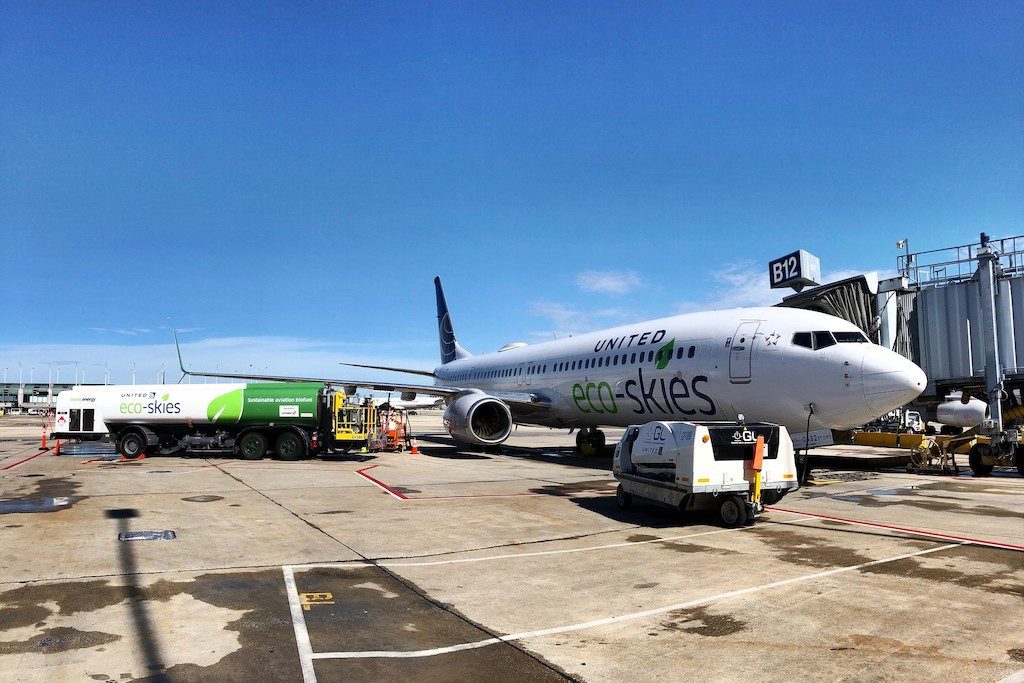Skift Take
United Airlines plans to stay ahead of the pack with a new effort to go "100 percent green." But it's unclear whether the decision to invest in something called direct carbon sequestration plants is any better than the industry norm of buying offsets for the nearly billion tons of greenhouse gases planes pump into the atmosphere every year.
Most travelers are familiar with the common flight booking add-on: Do you want to buy a carbon offset for your next trip?
The idea is simple. When a traveler buys a credit, the airline takes that money and invests it in projects that take carbon out of the air. For example, funds from a recently purchased offset from Qantas went towards protecting a Tasmanian forest, supporting Indigenous rangers to prevent wildfires in western Australia, and a wind farm in southern India.
Sounds good, right? Not to United Airlines CEO Scott Kirby.
“It may feel good in the short term but the math just doesn’t come close to adding up,” he told reporters on Wednesday. There is not enough land to plant all the trees needed to fully offset the carbon humans are putting in the atmosphere, whether through flying or other activities, Kirby added.
Airlines globally emitted 915 million tons of carbon in 2019, according to trade group the International Air Transport Association (IATA). That equals about two percent of global emissions.
Hence United’s decision to make a “multimillion-dollar investment” in the direct air capture and sequestration project 1PointFive with Occidental that was unveiled Thursday. The letter of intent will allow the Chicago-based carrier to go “100 percent green,” as Kirby put it, by 2050.
United’s direct involvement in carbon sequestration may be a first for an airline. Other carriers, including Delta Air Lines, have pledged to go carbon neutral and even embraced the idea of sequestration if not through a direct air capture project. Many are focused on methods ranging from carbon offsets to biofuels and even electric aircraft to reduce their carbon emissions.
Carbon sequestration involves taking carbon dioxide out of the atmosphere and storing it, either underground or in vegetation, according to the U.S. Geological Survey. The idea has been around for decades but, The New York Times reported in July, rarely implemented in the U.S.
Each 1PointFive plant will be able to sequester about a million tons of carbon annually, according to United. That represents a fraction of a percent of total airline industry emissions using IATA’s numbers
Greener Skies
United has long been a sustainable aviation leader in the U.S. In 2015, the carrier invested in Fulcrum BioEnergy in exchange for at least 90 million gallons of biofuel over 10 years. Biofuel flights began from its Los Angeles hub a year later — albeit with supplies from the firm World Energy — but have remained a small fraction of the airline’s overall fuel supply.
Finding a scalable supply of feedstock, or the organic matter used to make the biofuels, remains the largest challenge to this shift, Kirby said Wednesday. His comment echoed those he made in 2019.
“You can’t get [biofuel] in size,” Cowen analyst Helane Becker told FlightGlobal last year.
Offering carbon offsets to travelers is popular with airlines outside of the U.S. European airlines have largely taken the lead, though carriers like Qantas are also selling offsets to passengers when they book a flight.
But offsets face other criticisms in addition to concerns around scalability. A recent investigation by Bloomberg found that some of the millions-of-acres-of-forest protected by the Nature Conservancy’s offset program were not threatened as was claimed. A fact that raises the question of just how much carbon such initiatives are actually taking out of the atmosphere.
“We just don’t have time for false offsets that take credit for reductions that were already happening anyway,” Barbara Haya, research fellow at the University of California at Berkeley, told Bloomberg.
Carbon sequestration projects like the one United is investing in are not without their own issues. Concerns range from the high — but falling — cost of sequestering a ton of carbon to the energy needed to power the plants. Is direct air capture and sequestration worth it if it’s powered by a carbon-belching coal-fired power plant?
Climate Change ‘Biggest Issue of Our Generation’
United’s new carbon sequestration push does not come at the expense of other green initiatives. The airline will continue its slow expansion of biofuels, as well as push for things like more direct GPS flight routings that could cut the industry’s global emissions by as much as 15 percent, said Kirby.
More fuel efficient jets, like the Boeing 737 Max, will also help United achieve its sustainability targets. The carrier took its first delivery of a Max in 21 months on Tuesday, Dec. 8, following the re-certification of the jet by U.S. authorities in November. The aircraft offers a double-digit improvement in fuel burn compared to older models.
Boeing’s bread-and-butter narrowbody jet was grounded in March 2019. The move followed two fatal crashes that took the lives of 346 people in Ethiopia and Indonesia. Brazilian airline Gol was the first global carrier to reintroduce the Max on revenue flights on Wednesday.
But direct routings and fuel efficiency improvements coupled with carbon offsets will not make United green, said Kirby. The industry must make these moves — even as the coronavirus pandemic continues to ravage airline finances — for the planet and humankind’s future.
“Climate change is the biggest issue our generation needs to resolve for our kids and generations to come,” he said.
The Daily Newsletter
Our daily coverage of the global travel industry. Written by editors and analysts from across Skift’s brands.
Have a confidential tip for Skift? Get in touch
Tags: carbon emissions, carbon offsets, climate change, united airlines
Photo credit: United Airlines plans to go 100 percent green by 2050 with a new investment in carbon sequestration. Edward Russell
